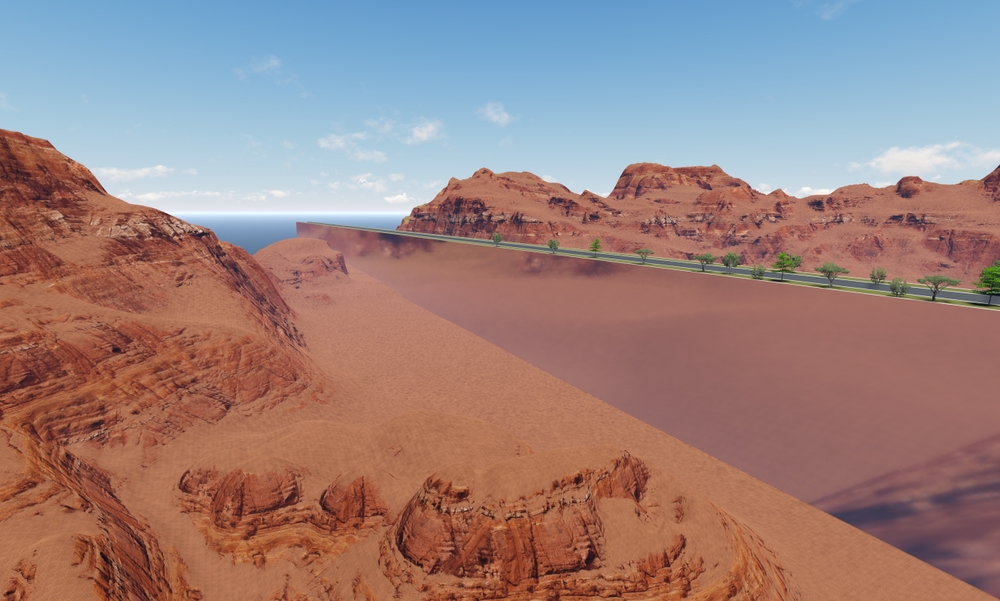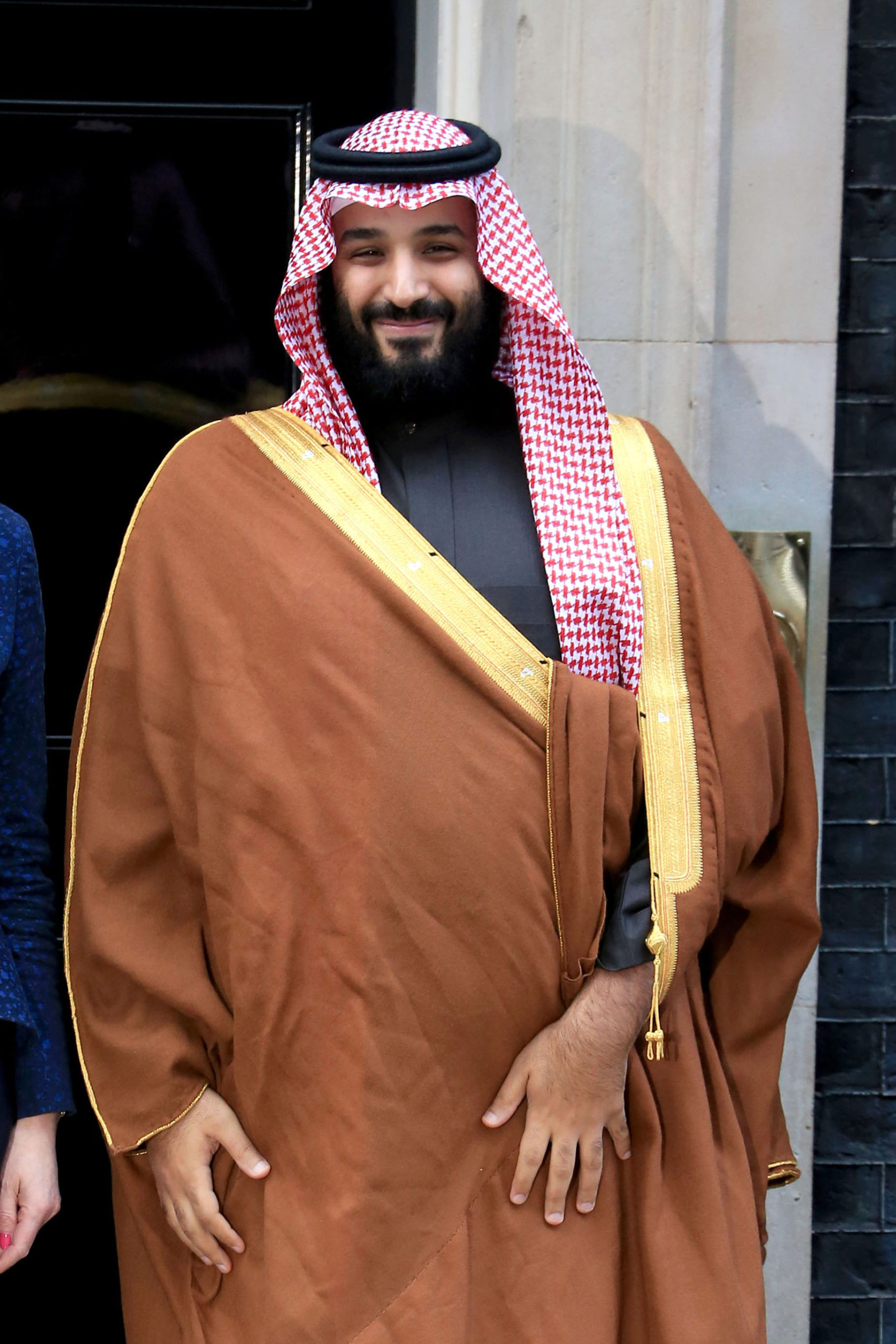Saudi Arabia unveils a new fantastical centrepiece within its planned Neom megacity
The Line may not lack ambition or scale, but critics are skeptical about its credentials as a futuristic utopia

It sounds like a utopia. A purpose-built city for nine million inhabitants, exclusively powered by renewable energy and free from cars and roads. Walls of vertical farms to feed residents. Ultra-accessible amenities within a five-minute walk of every household, plus a marina, parks, schools, offices, a high-speed rail line, and a sports stadium.
But then the going gets weird. This net-zero development with a footprint of just 34 square kilometres will be housed in two mirrored 170-kilometre-long skyscrapers as tall as the Empire State Building running in parallel through an empty desert. In Saudi Arabia.
Welcome to the future. Or at least Crown Prince Mohammed bin Salman’s (MBS) vision of it.
With its temperate microclimate, where artificial intelligence will be “continuously learning predictive ways to make life easier”, the 200-metre-wide The Line is set to be a “civilisational revolution” that will “tackle the challenges facing humanity in urban life today and will shine a light on alternative ways to live”, according to the gulf state’s de facto leader.
“The idea of layering city functions vertically, giving people the possibility of moving seamlessly in three dimensions to access them, is a concept referred to as zero-gravity urbanism,” he stated in the official press release.
It is the crown jewel in MBS’s Neom project, which aims to transform an expanse of desert 35 times the size of Singapore into a new megacity. Unveiled in 2017, the 26,500 square-kilometre Neom is the centrepiece of Saudi efforts to wean its economy off oil and attract foreign investment—a scheme dubbed Vision 2030.
Taking cues from early 20th-century sci-fi pulps, the megacity will supposedly feature robot maids, flying taxis, glow-in-the-dark beaches, and a giant artificial moon. Neom will also be home to Oxagon, a city floating on water spanning 7 kilometres, the largest floating structure in the world.
But it is the linear city slicing through the heart of the project that has hit headlines of late, mainly because of its sheer ambition. MBS announced last year that the first phase alone, expected to be completed by 2030, will cost USD304 billion. A former Neom planner, meanwhile, recently told Bloomberg that the outlay for the total project could reach USD1 trillion.
The idea of layering city functions vertically, giving people the possibility of moving seamlessly in three dimensions to access them, is a concept referred to as zero-gravity urbanism
The steampunk-influenced aesthetics resemble sets from a Marvel blockbuster—unsurprising, given some of the design consultants worked on the Guardians of the Galaxy films—showcasing lush hanging gardens, lakes, and couples picnicking on floating terraces amidst pixelated superstructures. Still, many urban planners believe the designers may have crossed the Rubicon with their futuristic blueprints.
“Some of the internal spaces at The Line look incredibly alluring: lush atria, vast cavernous interior spaces Grand Canyon-esque in scale, with residents perched on the edge enjoying picnics,” Philip Oldfield, head of the built environment school at the University of New South Wales Sydney, says. “Even if these were built, the satisfaction of residents would mostly be informed by how such spaces are operated and managed, not how dramatic they look.”
He also expressed concern about the embodied carbon impact of building The Line and the necessary associated infrastructure, particularly considering its enormous height and the strength it would need to withstand wind loads.
“You cannot build a 500-metre-tall building out of low-carbon materials. This would require a phenomenal quantity of steel, glass, and concrete,” adds Oldfield, explaining that it would likely produce more than 1.8 billion tonnes of embodied carbon dioxide—equivalent to slightly more than Japan’s annual emissions.

Regardless of how closely the product mirrors the CGI, and indeed how realistic its sustainability credentials will be, questions remain as to who will live in The Line. The interest in Neom is already exceptionally high. The USD500-billion super-city, which aims to be the world’s most innovative, sustainable, and technologically advanced when complete, is the most preferred location to buy a home by the kingdom’s homeowners, first-time buyers, and HNWI, according to the results of Knight Frank’s annual 2022 Saudi Report.
“The gargantuan Neom has captured the imagination of Saudis all across the Kingdom, with the appetite to purchase here running above 70 percent,” Faisal Durrani, head of Middle East research at Knight Frank, says. “Now work must begin to deliver on the promises made and, more importantly, deliver a city that caters to the aspirations of the kingdom’s hopeful homebuyers and eager investors alike.
“Creating a city from scratch, with a vibrant economy that draws in and retains talent is no easy feat, but numerous examples exist around the world and now it could well be Neom’s turn.”
Its creation from scratch in what the promotional materials call “a virgin area”, however, conveniently overlooks the region’s existing residents. For generations, the nomadic Bedouin Huwaitat tribe has called the desolate terrain between the Red Sea coast and the mountainous Jordanian border home. But in 2020, an estimated 20,000 Huwaitats were forcibly removed from two towns to make way for the megacity, according to human rights campaigners. Three members who protested the evictions were recently sentenced to death, whilst another protester was killed by security forces in a shootout three years ago.
Indigenous activist Alia Hayel Aboutiyah al-Huwaiti told the Guardian that “for the Huwaitat tribe, Neom is being built on our blood, on our bones … It’s not for the people already living there! It’s for tourists, people with money. But not for the original people living there”.
Footage released by aerial photography company Ot Sky showed work had finally commenced on The Line in October 2022. But will the world’s most ambitious city be a utopia or dystopia? It is a subjective question. And one that urban planners, activists, and analysts will no doubt pore over until MBS’s linear oasis finally bears fruit.
The original version of this article appeared in Issue No. 175 of PropertyGuru Property Report Magazine. Write to our editors at [email protected].
Recommended
Why everyone is moving to Selangor and Johor: Malaysia’s real estate comeback
Malaysia’s upturn in fortunes is especially prevalent in secondary destinations such as Selangor and Johor
Penang’s silicon boom: How the US-China tech war is supercharging local real estate
Penang’s booming semiconductor industry has created ripples within the local real estate sector
New leader, new opportunities: How Hun Manet is shaking up Cambodia’s real estate game
Hun Manet is overseeing decent economic growth and widening access to the country’s real estate market for foreigners
Singapore embraces inclusive housing reforms amid resilient demand
The Lion City’s regulatory strength continues to exert appeal for international investors








